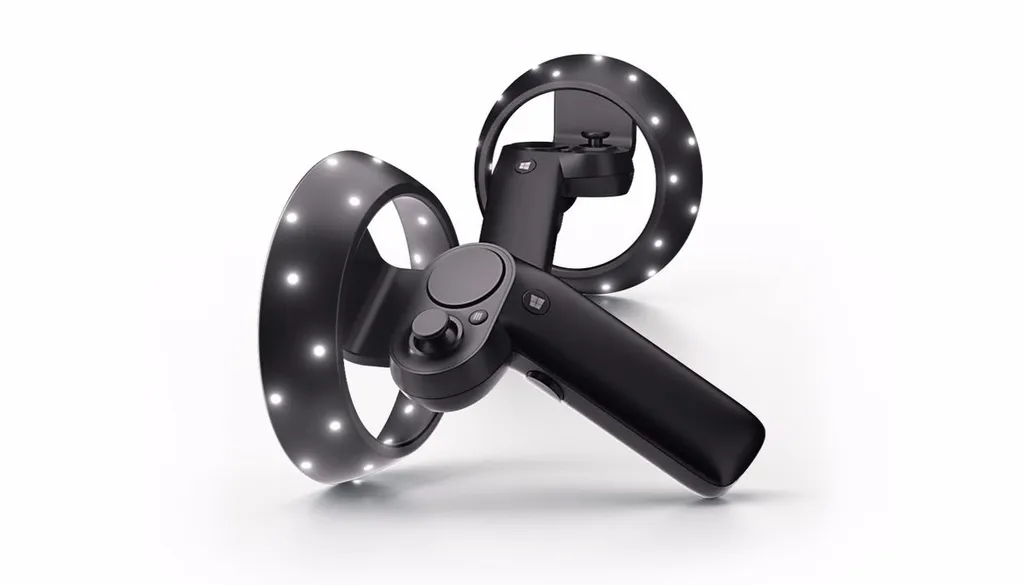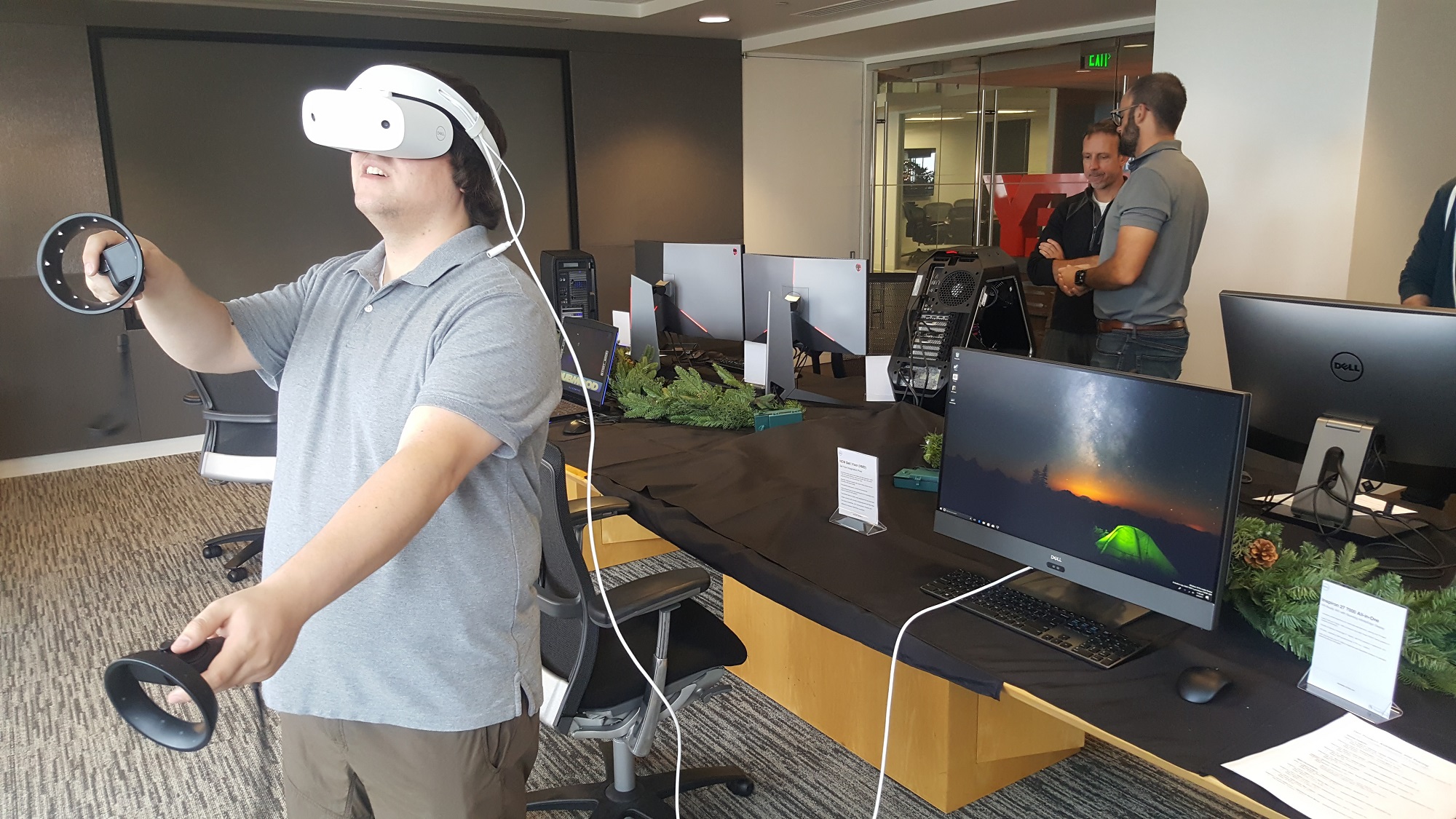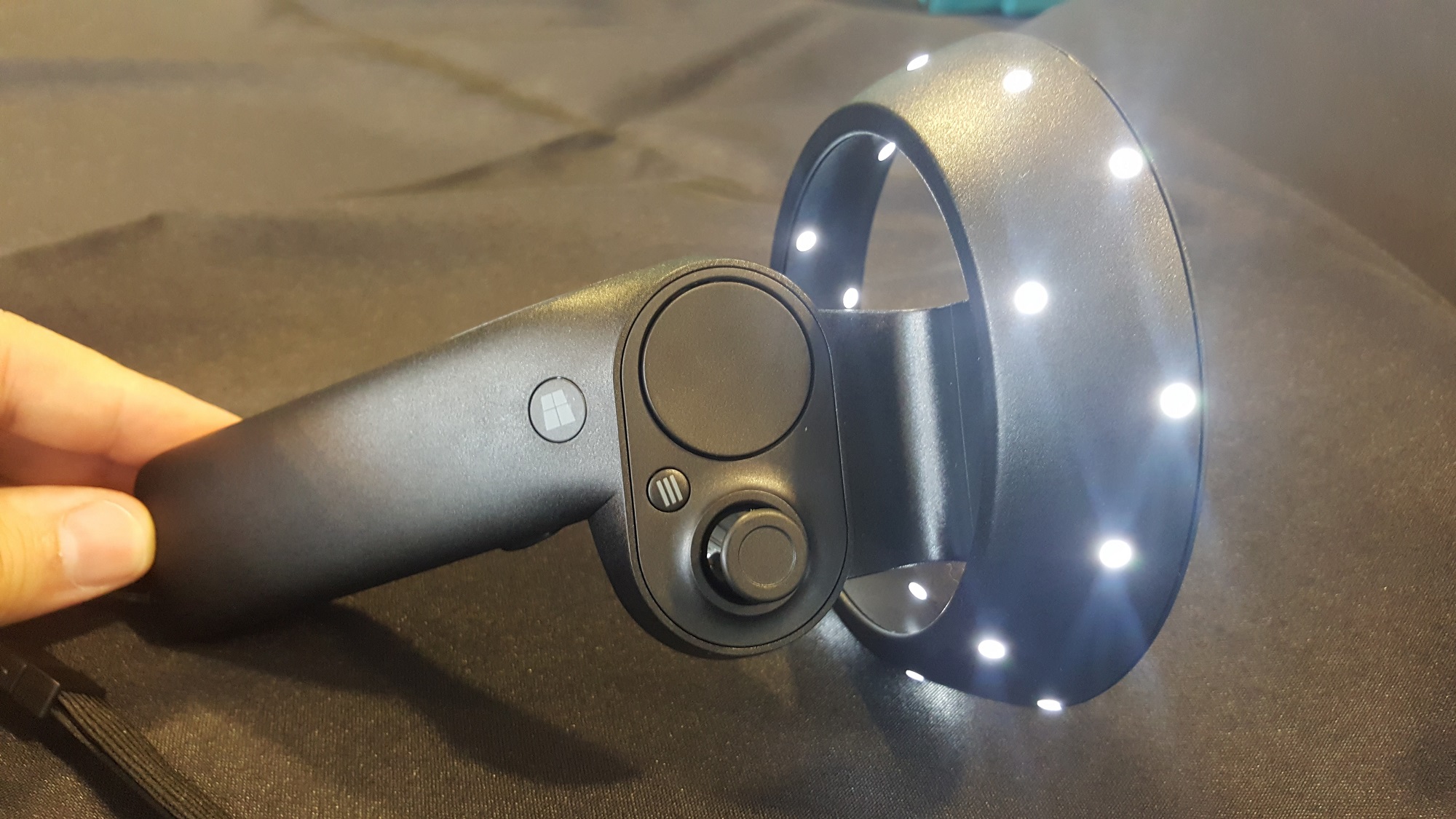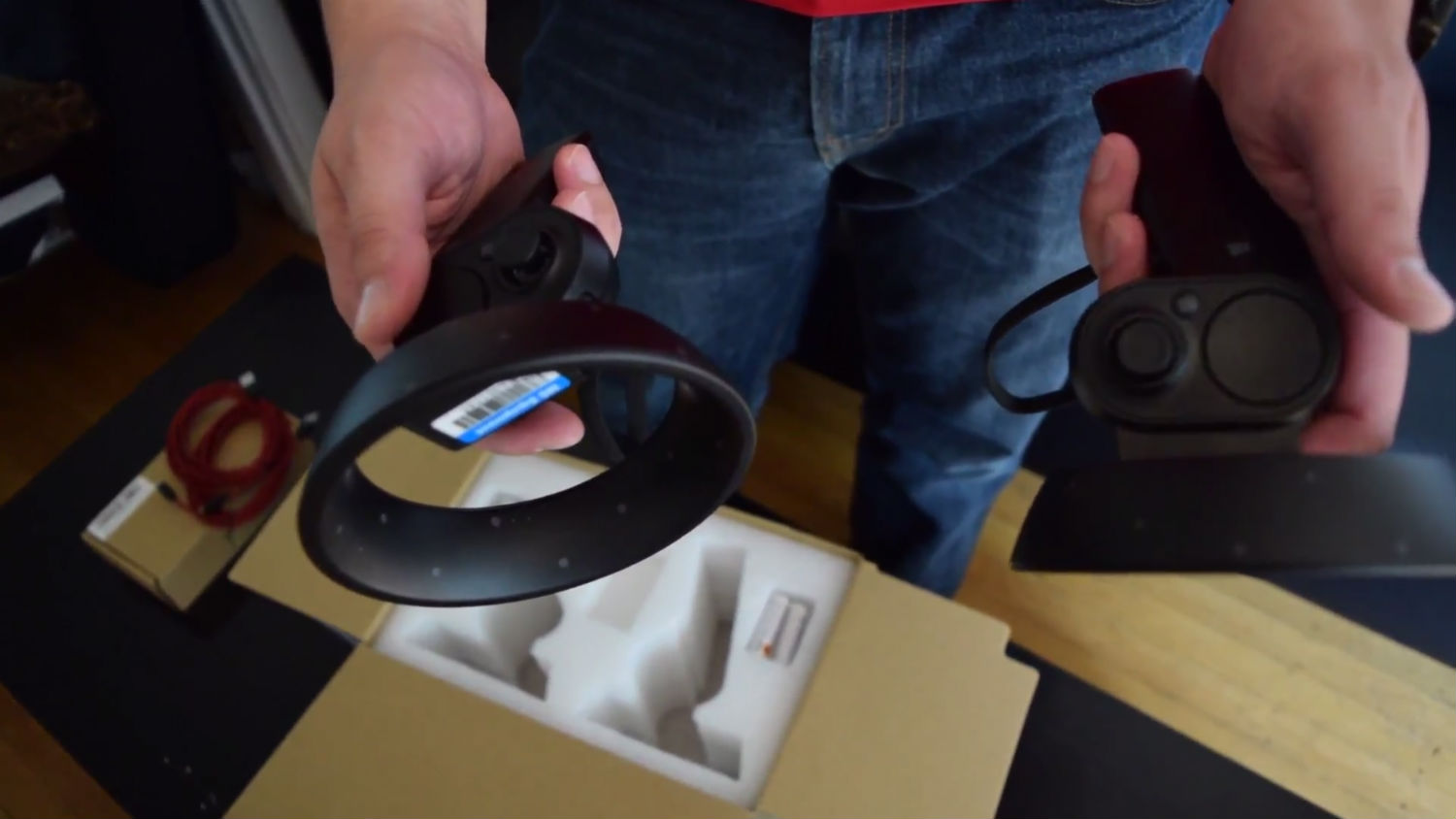When it comes to input mechanisms for virtual reality it’s really a two horse race at the moment. The HTC Vive nailed roomscale tracking first with its lighthouse base station system and wand-like motion controllers while the Oculus Rift released its Oculus Touch controllers less than a year ago. We prefer the Touch controllers from a pure comfort, ergonomics, and usability perspective, but the lighthouse tracking system is more versatile and scalable.
Meanwhile Sony’s PlayStation VR platform is chugging away with mostly gamepad experiences and a smattering of PS Move controller apps, but those controllers are by far the least advanced part of that setup. As a result Microsoft is hoping to shake up the marketplace with the launch of their Windows “Mixed Reality” VR motion controllers. You can see the reveal video below:
I put “Mixed Reality” in quotes previously because that’s what the company is labeling the entire market consisting of VR, AR, and other technologies. Practically speaking though these are just VR motion controllers to use with either the HP, Acer, or Dell headsets (as well as the upcoming ASUS device.)
Hands-On Impressions
At a private Dell-focused press event in San Francisco earlier this month I got the chance to go hands-on with the Windows VR motion controllers for myself in conjunction with the Dell VR Visor. You can read more about my thoughts on the Dell VR headset here (as well as HP vs Acer) to get the full picture, but for this article we’ll focus strictly on the controllers. Here’s a very unflattering shot of me looking like a fool:
Regardless of which Windows VR headset you get these controllers are expected to work seamlessly. The great thing about the Windows VR platform is the ease-of-use and setup from the consumer angle. You’ll be able to plug directly into your PC or laptop using the one cable from the headset itself that branches into a USB and HDMI plug. That’s it. No base stations or tracking cameras required.
From there the Windows VR controllers communicate with the headset wirelessly and you’re good to go. At my demo I didn’t get the chance to try any games or apps with the controllers, but instead just walked around the Windows VR home space. This let me see how it felt to move around using the motion controllers and I was able to see how well the tracking worked. They were represented digitally in the world much like Vive wands are during the SteamVR home interface as well.
When these Windows VR headsets launch they’re expected to have a suite of apps available from the Windows Store, such as Superhot and Arizona Sunshine. There is even a Halo experience being worked on and they’ll work with Steam’s VR interface too, greatly expanding the number of compatible apps.
Visually they look like a combination of the current Vive wands and the Oculus Touch controllers. Microsoft was able to cram both a tiny little touch pad and a thumbstick onto a single device, as well as side grip buttons and a trigger, plus a menu and Windows button. Theoretically these should work great for pretty much any type of VR app you’d ever want to run.
They were comfortable to hold and felt very sturdy; luckily they weren’t as top-heavy as they appear. Since I didn’t get to try any actual content my demo was quite limited, but I did put the controllers through their paces in the home interface. One of the biggest questions facing these controllers coming into my demo was whether or not the tracking would hold up if the headset’s tracking cameras could not see them. As you know the Vive and Rift both have external cameras to track their controllers, but that isn’t the case here.
Based on my hands-on experience the answer is yes, the Windows VR motion controllers work just fine even when the headset’s cameras cannot see them.
Testing this was very easy in my demo. The controllers were modeled digitally inside VR and they had laser pointers extending from the tips. To answer my question I held each controller out in my hands, extending my hands to the sides, and then curled my hands up to point them inward. The laser pointer followed and I could easily move them around accurately. I did the same test by putting the controllers behind my back, clearly out of the headset camera’s sight, with the same result. I did notice if I was overly erratic there was some hiccuping, but as far as I know these are still dev kit devices so that could be fixed with software and firmware updates over time.
This was an important threshold to meet because tons of VR apps and games have users swinging controllers around and pointing in various directions, so if the cameras needed to see the controllers at all times it’d have been a deal breaker. Luckily that was not the case, at least not with the Dell headset.
Release Info
According to Dell and Microsoft the Windows VR motion controllers are expected to be available for purchase later this year on or around October 17th, 2017, for $99. As stated, they should work perfectly regardless of whether or not you choose the Dell, HP, or Acer Windows VR headset.
What do you think of these controllers thus far? Let us know your thoughts down in the comments below!





























